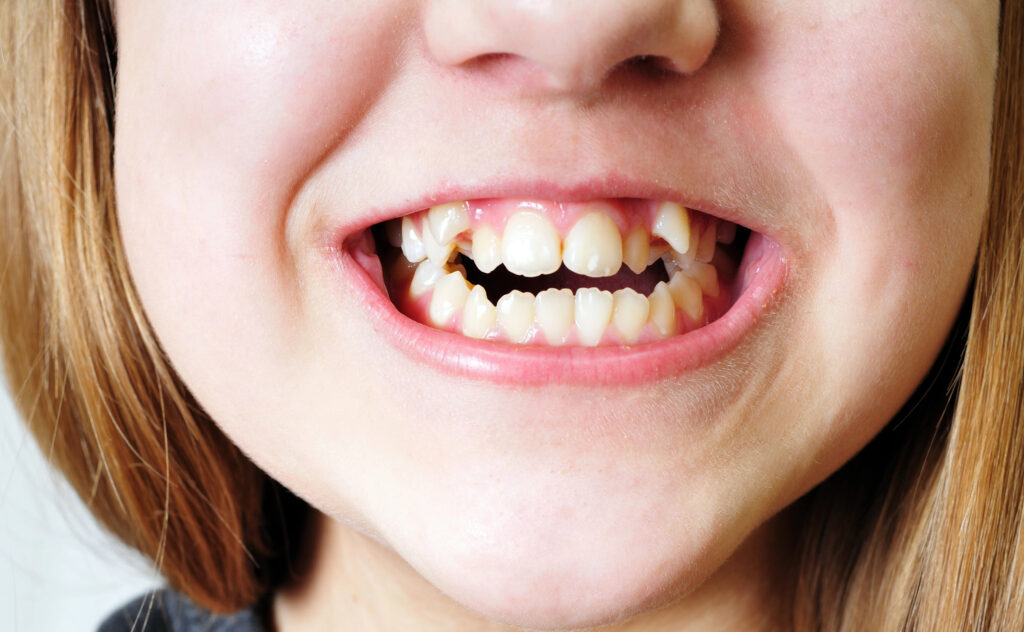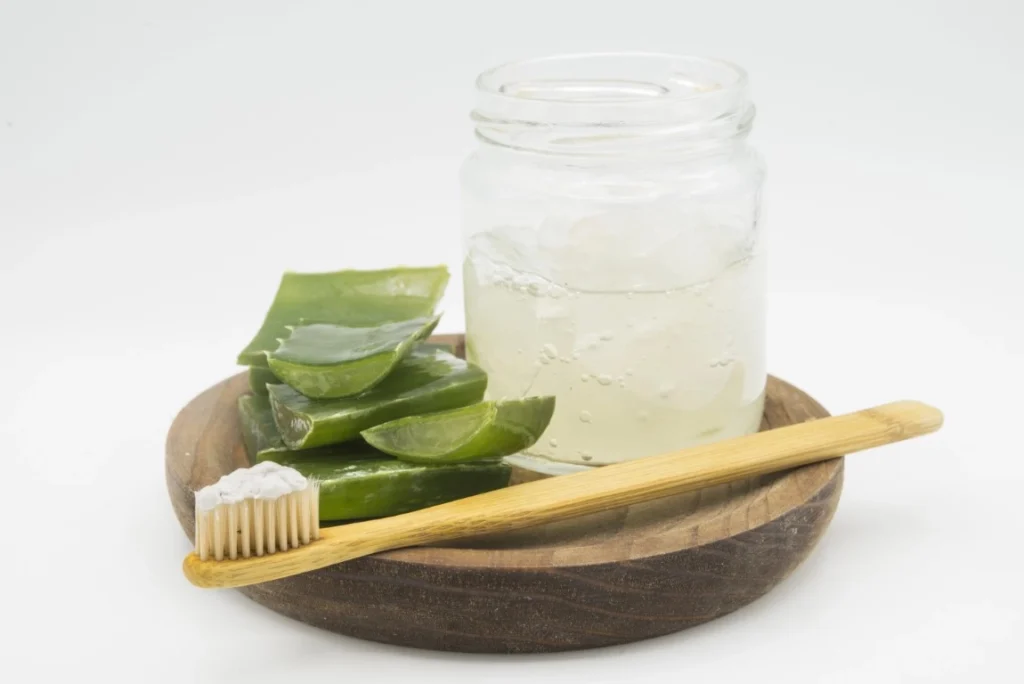
Many umbrella dental terms are used to describe issues with your oral health. These terms are often more scientific than ones you may hear in your dental office or when talking with peers. One of these terms is malocclusion, which refers to when upper and lower teeth are not properly aligned or have other improper contact when the jaw is closed. Below, we will share more about how malocclusion affects your daily life and what other terms are often used to describe this oral condition.
What Causes Malocclusion?
Most cases of malocclusion are caused by genetics, but there are other factors that can cause misaligned teeth including dental trauma, falls, premature tooth loss, TMJ disorders, teeth grinding, thumb sucking or pacifier use, and ill-fitted crowns. Some cases of malocclusion are caused when individuals have large teeth and their mouth is not equipped to handle them, thus causing overcrowding. Most cases of misaligned teeth can be solved with braces or orthodontic care.
Overbites
One of the most common occurrences of malocclusion is an overbite. This is when the upper teeth cover your lower teeth when you bite down. It can also be referred to as a deep bite since the upper set of teeth goes deep into the lower part of the mouth. Overbites are usually corrected by braces.
Underbites
This is the opposite of an overbite, so the lower teeth cover the upper set of teeth. The upper teeth sit farther back than the lower and often give a bulldog-like appearance. Underbites can be helped with braces, but more intense options may be needed if the misalignment is severe. Other methods to correct an underbite include headgear, jaw surgery, or tooth extractions.
Crossbites
Similar to overbites, cross bites don’t cover your entire lower set of teeth but do not align as they should when you bite down. Crossbites can feature all of your teeth, or just a few, which distinguishes them from an over or underbite condition. The biggest concern with crossbites is uneven wear on teeth. These may require intense braces with headgear or surgery.
Crowded Teeth

While teeth can vary in size, your mouth is only so big and can only handle teeth that are suited for that allotted space. While some individuals may have large teeth and experience no issues of malocclusion, others won’t have the space for large molars or wisdom teeth. Some people with smaller jaws or mouths may not even have room for smaller teeth.
Other Malocclusion Terms
Many misalignments can occur with a set of teeth. This is why the umbrella term of malocclusion is often used to describe all of them. However, the more descriptive dental terms help patients and others to understand exactly what is happening with the teeth. Some other terms for malocclusion include:
- Misplaced midlines
- Gapped teeth
- Overjets
- Open bites
- Spacing
- Protrusion
- Edge-to-edge bite
There are also different classes and divisions of malocclusion, depending on the type and severity. While the classes may not be understood by the patient, they help dentists and hygienists to quickly understand the severity of your case.
Risks Of Improper Tooth Alignment
While many may feel that tooth alignment is purely a cosmetic or appearance issue, other health issues could be caused by malocclusion. When left untreated, malocclusion can lead to further pain, deteriorated oral health, and much more.
Some risks that come from improper tooth alignment include:
- Gum recession: Your teeth and gums work together to protect your mouth from disease or harm. When your teeth are misaligned, it can expose your gums to more frequent wear and lead to gum recession. Having an underbite or overbite can also cause friction on your gums and lead to recession.
- Jaw pain: Most improper bites are not comfortable on your jaw. The misalignment can put pressure on your jaw bones and joints causing pain throughout the day.
- Malnutrition: Chewing can be largely affected by misaligned teeth. If eating and chewing are painful or take longer to perform, some patients may become malnourished as they switch to soft foods or only liquids. Having malocclusion fixed as soon as possible will help you enjoy your favorite foods and get the nutrients you need.
- Sleep Apnea: Your jaw position and reduced oral space can lead to sleep apnea. Misaligned teeth can cause restriction to your airway, which can limit your breathing during sleep. Malocclusion can also impact your nasal passages, which could lead to louder mouth breathing or snoring.
- Early tooth deterioration: The biggest concern for those with malocclusion is early tooth decay. Friction, lack of nutrients, mouth breathing, or improper chewing can cause tooth damage that is irreversible. Once a lot of your enamel is lost or you have a large bacterial infection, your teeth will never be the same.

Services From Eric Felt Dental
Our dental office offers pediatric dentistry, general dentistry, cosmetic dentistry, and more. We want you to love your smile, so we provide a variety of services to help you receive all of your care in one place. Located in Cottonwood Heights, we serve a large area of Utah residents and help them take better control of their oral health. Schedule your appointment today!








